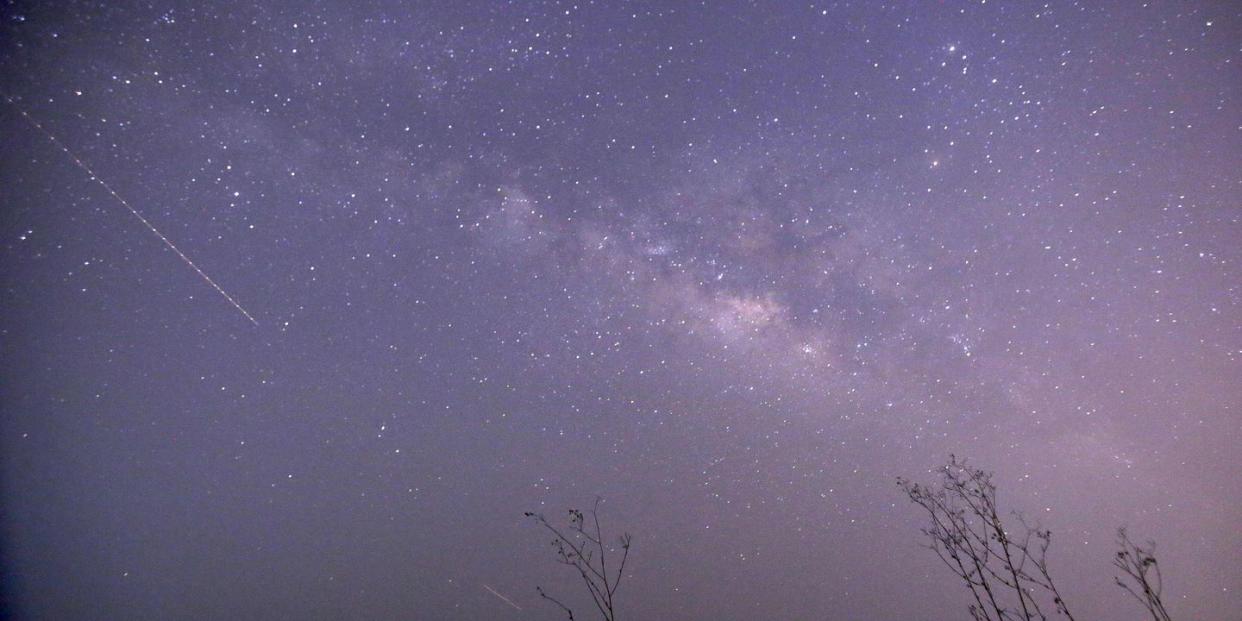The Lyrid Meteor Shower Peaks This Weekend

The 2018 edition of the Lyrid meteor shower began on Monday, April 16. But if you haven't had a chance to head outside and watch it yet, don't worry. The annual meteor shower doesn’t hit its peak until late Saturday, April 21 and into the early hours of Sunday morning.
For the best chance to see the show, head outside to an area far from light pollution just after midnight local time on Sunday morning and face east.
"Take in as much sky as you can," Bill Cooke, a meteor expert at NASA's Marshall Space Flight Center in Huntsville, Alabama, told NBC News MACH. He expects that viewers should see about 10 meteors per hour.
A post shared by Sean Parker (@seanparkerphotography) on Apr 23, 2017 at 12:14pm PDT
However, this weekend's weather could affect your chances of seeing the meteor shower. Accuweather Astronomy distributed a map where the sky will be clearest across North America on Saturday night, so you can plan for optimal visibility.
The #Lyrid meteor shower will put on a dazzling display later this week: https://t.co/CtoRHZxRSo pic.twitter.com/6E3RiirE27
- AccuWeatherAstronomy (@AccuAstronomy) April 17, 2018
Those in California, the Northeast, and parts of the Southwest, Midwest and the Carolinas will have the most luck seeing the meteor shower on Saturday night, while large parts of the South and Midwest from eastern Texas over to Mississippi up to Missouri and even southern Illinois will have the lowest chance of visibility.
A post shared by paulostorch (@paulostorch) on Apr 23, 2016 at 1:13pm PDT
Named after the Lyrid constellation from which they radiate, the Lyrids are caused by bits of space debris from Comet C/1861 G1 Thatcher-or Comet Thatcher for short-hitting the Earth’s atmosphere and creating bright streaks across the sky when they burn up. While the Lyrids aren’t as bright as the Perseids that happen every August, they are the oldest known meteor shower in the world, with sightings dating back to 687 B.C.
If you miss out on the Lyrids this weekend, your next chance to see a meteor shower isn’t far off. The Eta Aquarid meteor shower will peak on the night of May 6 into the morning of May 7 as the Earth passes through the debris Halley’s Comet leaves behind each year.
You Might Also Like

